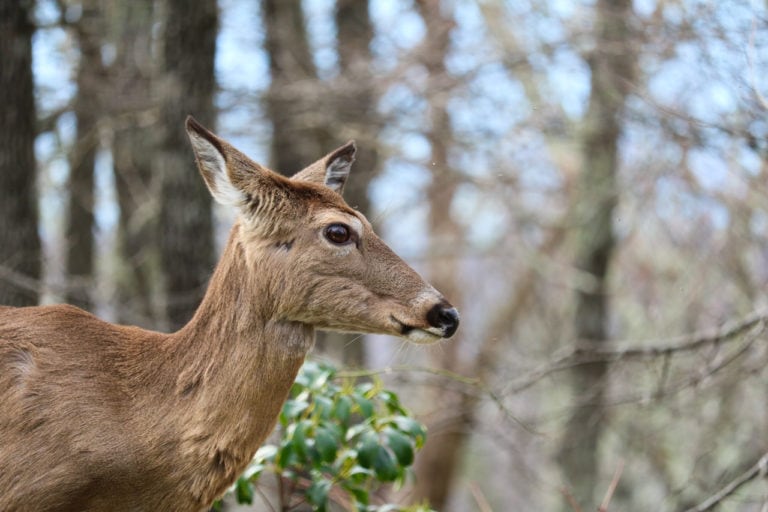The Ultimate Guide to Visiting Shenandoah National Park With Your Dog
If you’re planning a visit to Shenandoah National Park with your dog, you might wonder what you can do with dogs in the park. And I have some really great news for you!
As one of the most dog-friendly national parks in America, Shenandoah National Park offers a multitude of activity options and even has dog-friendly accommodations.
Literally hundreds of miles of trails are open for hiking with dogs in Shenandoah National Park, while pets are also welcome in most developed areas.
In this guide, you’ll find all kinds of information about visiting Shenandoah National Park with dogs, from the park’s official pet rules to dog-friendly trails, things to do, and safety tips.
FAQs About Visiting Shenandoah National Park With Your Dog
Below, you’ll find all the answers to the most common questions about dog rules in Shenandoah National Park. This section will provide you with the necessary information to properly plan and prepare for your visit to Virginia’s only national park.
Additionally, at the end of these FAQs, you’ll also find my recommendations for dog-friendly trails and other fun things to do in Shenandoah National Park with dogs.
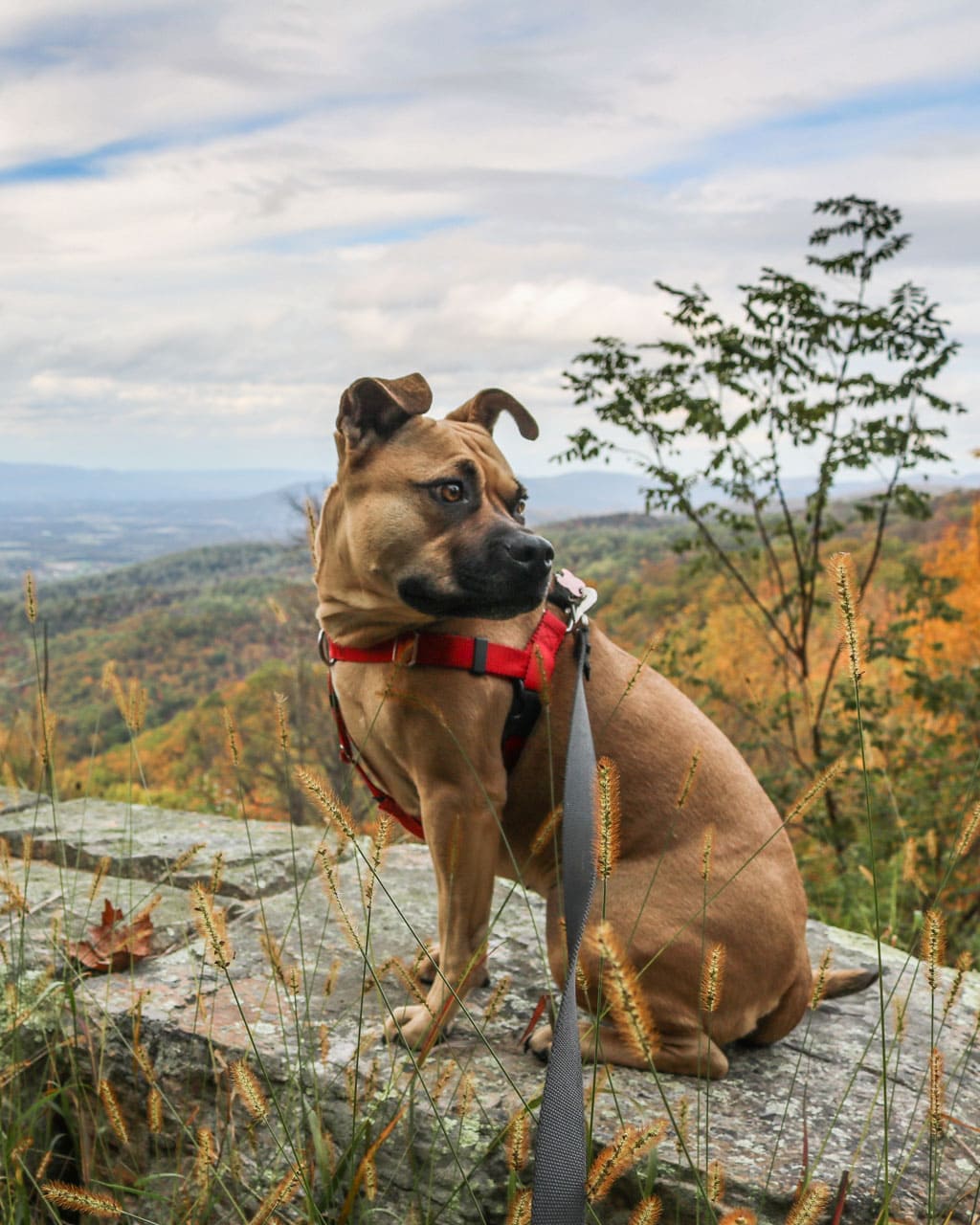
This guide to visiting Shenandoah National Park with your dog contains affiliate links. You can read more about our Terms of Use / Disclosure here.
Are Dogs Allowed in Shenandoah National Park?
Well, as the paragraphs above clearly state, dogs are absolutely allowed in Shenandoah.
In fact, Shenandoah National Park is exceptionally dog-friendly. Unlike most other national parks, Shenandoah permits pets on the vast majority of its hiking trails, as well as in many other areas, even including lodges and cabins.
What Are the Main Rules for Dogs in Shenandoah?
The primary rule for dogs in Shenandoah is that they must be on a leash that’s no longer than 6 feet in length at all times (except when they’re in a vehicle). Dogs must always be under the direct control of the owner, too.
The National Park Service further explains this dog rule on its website: “Pets have the potential to interfere with the safety of visitors and the natural resource and the enjoyment of others. […] Similarly, pets may be endangered by wildlife, cars, or careless tethering if not properly restrained and managed.”
“Some trails and facilities are unsuitable for pets because of the high volume of visitor use, or sanitation concerns. Particularly in campground and lodging areas, improperly controlled pets can cause conflicts between visitors,” the agency says.
A second important rule is that dog owners are required to pick up dog waste everywhere in the park, including in campgrounds, picnic areas, parking lots, and on roads and trails.
The park reminds dog owners to “be sure to have a bag or canister to put it in until you can find a trash can. Do not leave pet waste bags in trees, on trail posts, or discarded in the woods. If there’s no trash can immediately available, take it with you until you find one.”
Learn how your dog can become a BARK ranger here.
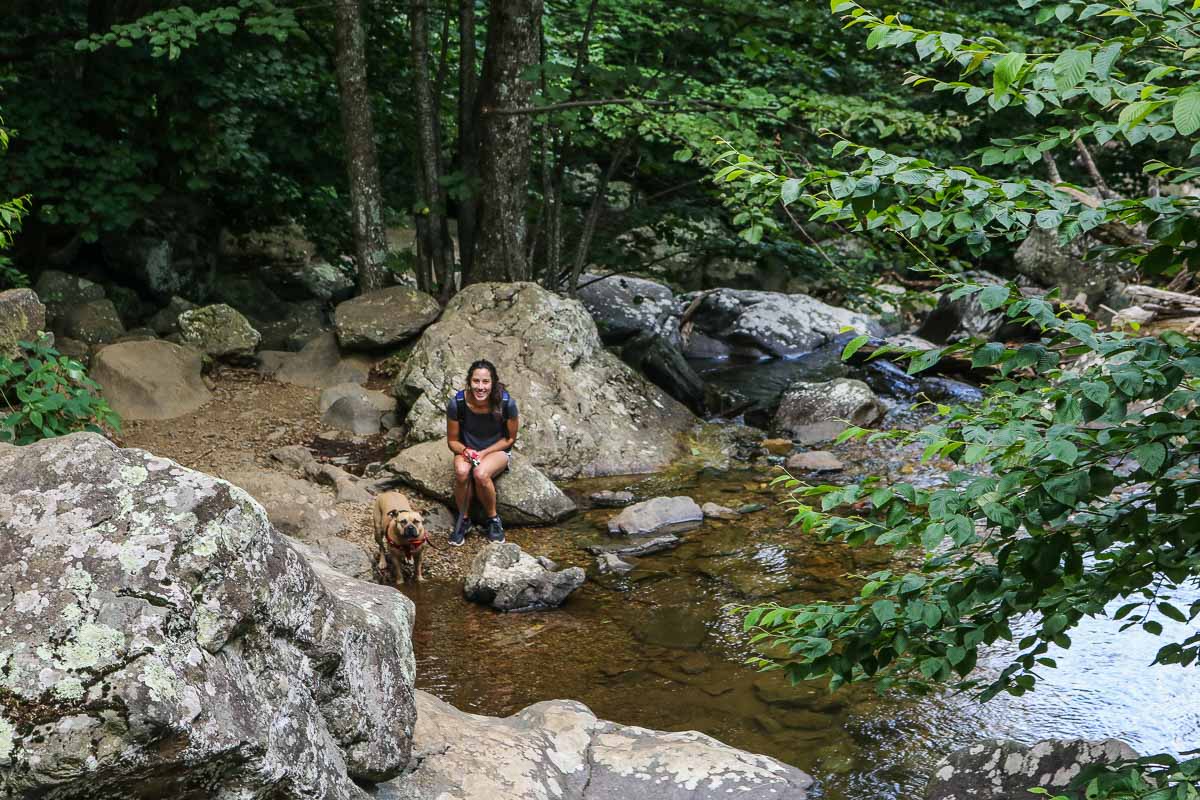
Can I Leave My Dog Unattended in Shenandoah National Park?
Yes, Shenandoah National Park dog rules differ from almost all other national parks in that you are, in fact, allowed to leave pets unattended and secured to any stationary object. There are some conditions that must be met, though.
As outlined in the Superintendent’s Compendium, in Shenandoah National Park dogs may be:
- Tethered to a fixed or stationary object, for a maximum period of 30 minutes, and provided that the animal does not get injured or hunt.
- Tethered at a campsite, for a maximum period of 1 hour.
- Tethered in developed areas, other than campsites, for a maximum period of 30 minutes, and provided that the animal cannot reach a walkway.
- Left in a vehicle with its windows opened far enough to allow for proper ventilation, while also ensuring that the animal cannot escape. Note, however, that you may not tether your dog to your vehicle or anywhere else in a parking lot.
Where Can I Go With My Dog in Shenandoah National Park?
Dogs are welcome almost everywhere in Shenandoah National Park. This includes most hiking trails, but also campgrounds, roads, parking lots, and even the three main Shenandoah accommodations.
Shenandoah National Park allows pets in the following areas:
- On almost all hiking trails (see exceptions below)
- In all campgrounds, which includes the Mathews Arm Campground, Big Meadows Campground, Lewis Mountain Campground, Loft Mountain Campground, and Dundo Group Campground
- In many developed areas, such as parking lots, roadways, and Skyline Drive overlooks
- At all picnic grounds, including Dickey Ridge, Elkwallow, Pinnacles, Big Meadows, Lewis Mountain, South River, and Dundo
- In pet-friendly rooms at Skyland, the Big Meadows Lodge, and Lewis Mountain Cabins
Where Are Dogs NOT Allowed in Shenandoah National Park?
Shenandoah is super-dog-friendly, but there are still a few areas where pets are not permitted.
These are the places where pets are not allowed in Shenandoah National Park:
- On ranger programs
- In entrance stations
- In public buildings, such as visitor centers, camp stores, restaurants, and non-pet-friendly lodging rooms. (The only exceptions are service animals, though, which are allowed anywhere visitors can go.)
Additionally, dogs are also not allowed on a select number of hiking trails in Shenandoah National Park. Although these trails do include some of the park’s most popular hikes, their combined distance is only about 20 miles (out of a total of 500+ miles of trails in the park).
See the list below for trails where pets are not permitted:
- Fox Hollow Trail (Skyline Drive mile 4.6)
- Stony Man Trail (mile 41.7), except for the portion that follows the Appalachian Trail
- Limberlost Trail (mile 43)
- Dark Hollow Falls Trail (mile 50.7)
- Story of the Forest Trail (mile 51)
- Bearfence Mountain Trail (mile 56.4)
- Frazier Discovery Trail (mile 79.5)
- Post Office Junction to Old Rag Shelter
- Old Rag Ridge Trail
- Old Rag Saddle Trail
- Ridge Access Trail (Old Rag area)
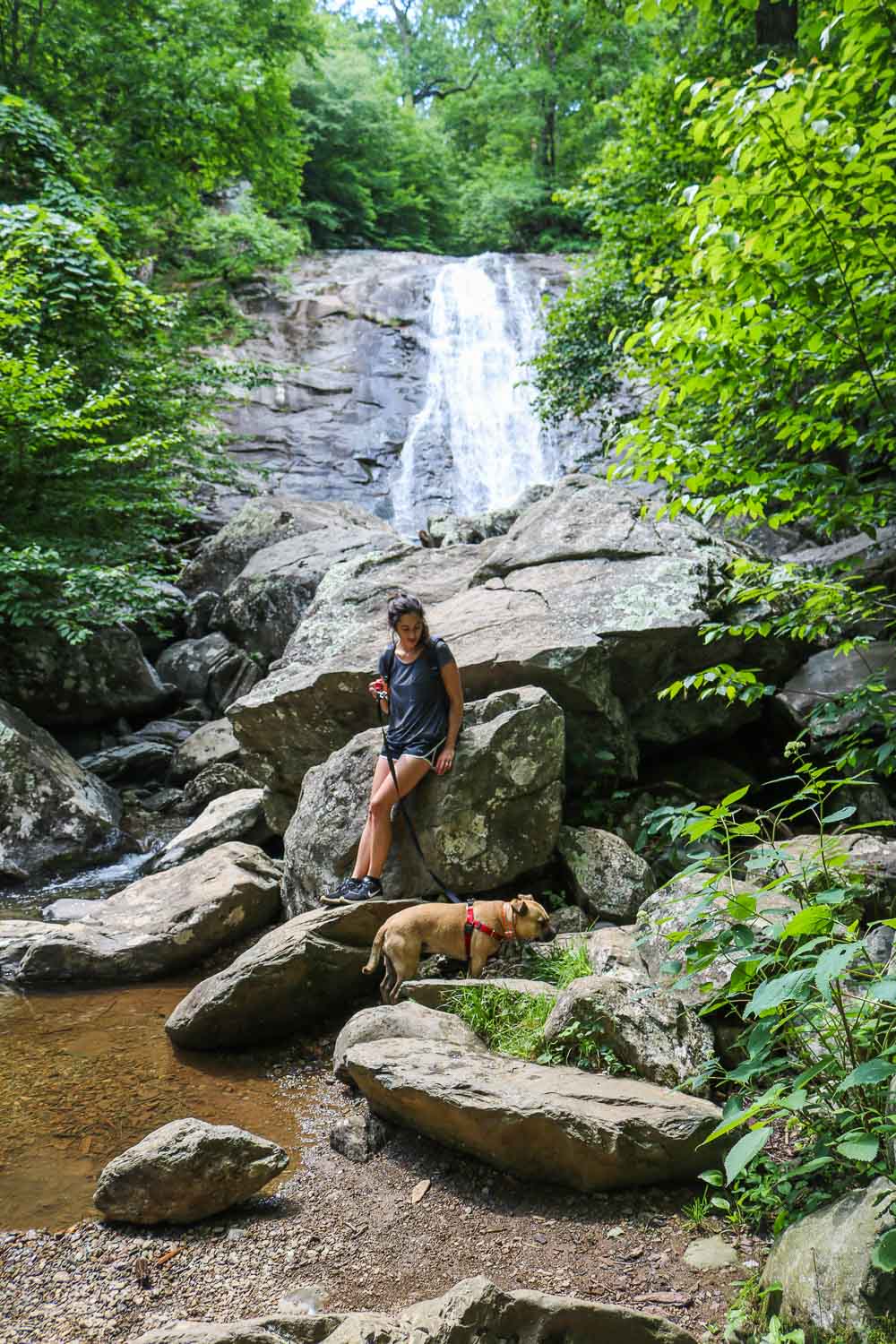
What Are the Best Dog-Friendly Hikes in Shenandoah National Park?
As I explained above, only about 20 of the park’s 500+ miles of hiking trails are off limits to dogs.
This means, of course, there are literally hundreds of miles of trails to explore with your dog, including the 101 miles of the Appalachian Trail that run through the park.
For a complete overview of all dog-friendly trails in Shenandoah National Park, please take a look at the park’s website. Just to give you some ideas, though, here are my ten recommendations for hikes in Shenandoah to do with dogs:
- Section of the Appalachian Trail, which parallels, follows, and occasionally crosses Skyline Drive (distances and locations vary)
- Overall Run Falls Trail – 5.1-mile out-and-back hike (mile 22.2)
- Millers Head Trail – 1.6-mile out-and-back hike (mile 42.5)
- Whiteoak Canyon Trail – 7.3-mile out-and-back hike (mile 42.6)
- Hawksbill Loop Trail – 2.9-mile loop hike (mile 45.5)
- Rose River Falls Trail – 4-mile loop hike (mile 49.4)
- South River Falls Loop – 3.3-mile loop hike (mile 62.7)
- Doyles River-Jones Run Falls Loop -7.8-mile loop hike (mile 81.1)
- Blackrock Summit Trail – 1-mile loop hike (mile 84.4)
- Turk Mountain Trail – 2.2-mile out-and-back hike (mile 94.1)
What Can I Do With My Dog in Shenandoah National Park?
Besides exploring the many miles of dog-friendly trails, there are lots of other things to do in Shenandoah National Park with dogs.
Below are my favorite dog-friendly activities in Shenandoah National Park other than hiking.
1. Explore Big Meadows
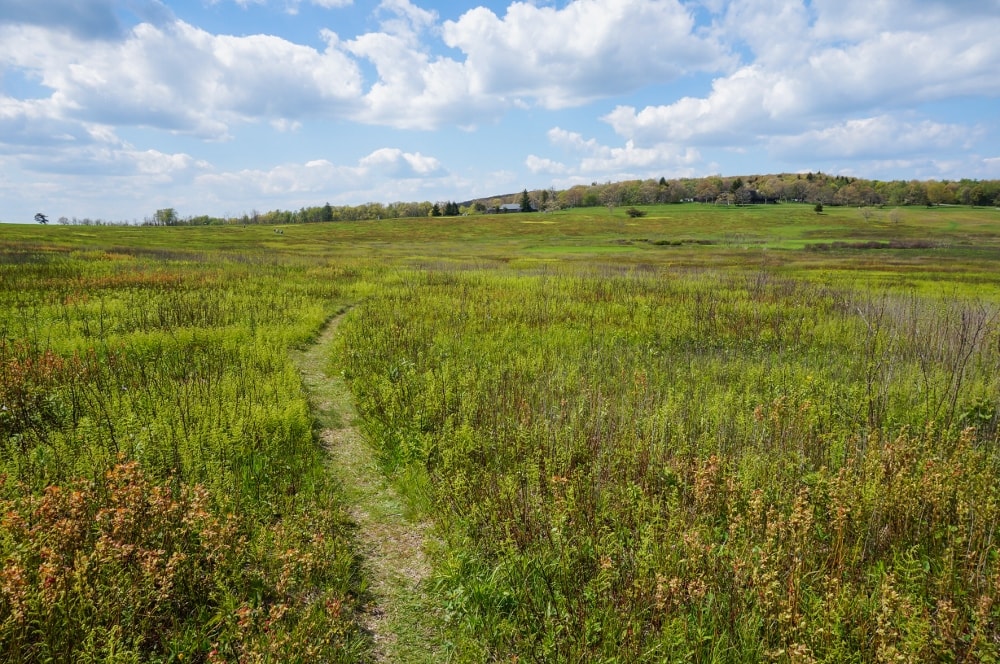
Located in the heart of the park and about halfway down Skyline Drive, Big Meadows is a sprawling clearing amid the forests of the Blue Ridge Mountains.
Previously used as farmland, these meadows are now artificially kept clear through controlled fires and mowing. This allows for an abundance of wildflowers, grasses, and herbs to flourish, which in turn attract wildlife such as butterflies, birds, white-tailed deer, and black bears.
You and your dog can wander through Big Meadows on a network of unofficial trails, as far and as long as you both like.
Just across Skyline Drive from Big Meadows is a picnic area, as well as a camp store, the park’s only gas station, and the Harry F. Byrd Visitor Center. (Remember that dogs aren’t allowed in public buildings, though.)
2. Walk a Section of Skyline Drive
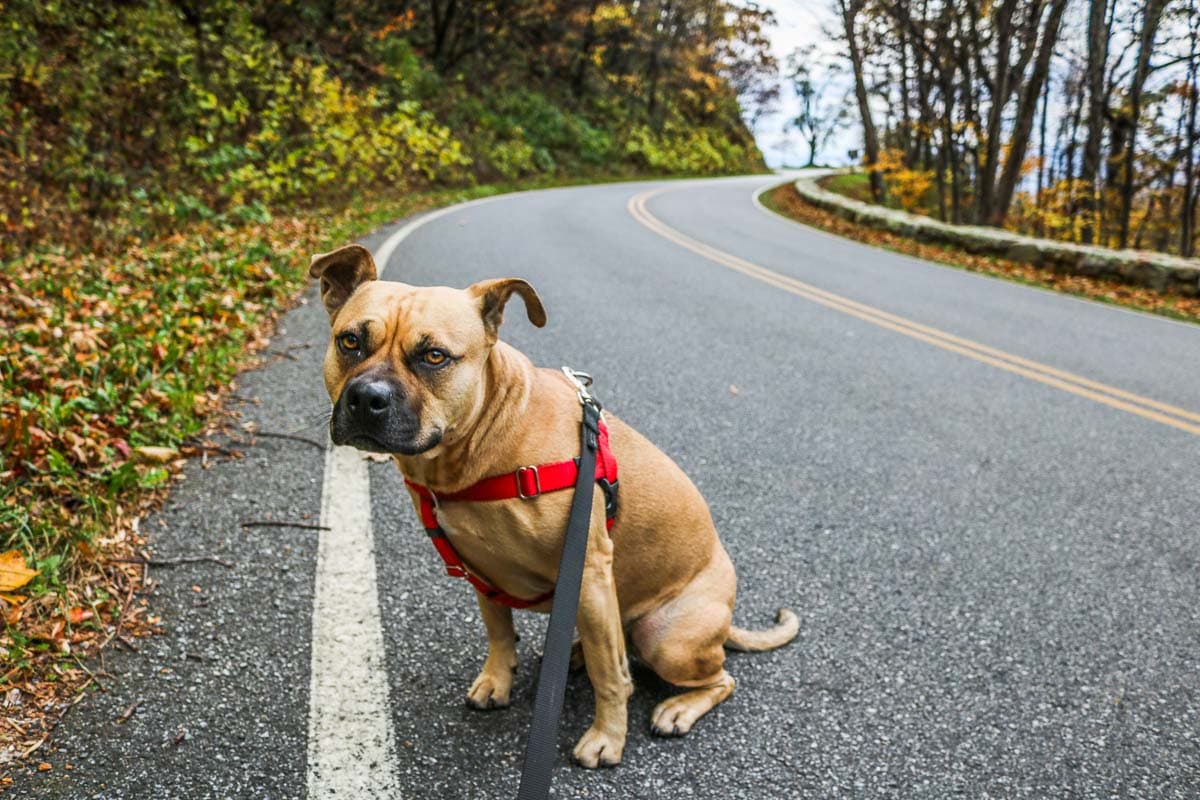
Meandering its way through Shenandoah National Park along the crest of the Blue Ridge Mountains, Skyline Drive is 105 miles of pure bliss. This scenic road is lined with more than 70 overlooks, numerous trailheads, and other points of interest.
Not only motorists can enjoy Skyline Drive. The road is also open to cyclists and pedestrians alike.
You can walk any particular section of Skyline Drive with your dog, enjoying breathtaking Blue Ridge views, serene sylvan scenery, and perhaps spotting some wildlife, too.
Make sure to really stick to the side of the road, though, as Skyline Drive can be quite traffic-heavy.
3. Enjoy a Picnic
There are several picnic grounds throughout Shenandoah National Park, all of which welcome visitors and their dogs.
Enjoying lunch, afternoon snacks, or dinner at a picnic ground is a great way to rest and fuel up in between activities!
4. See Wildlife From a Safe Distance
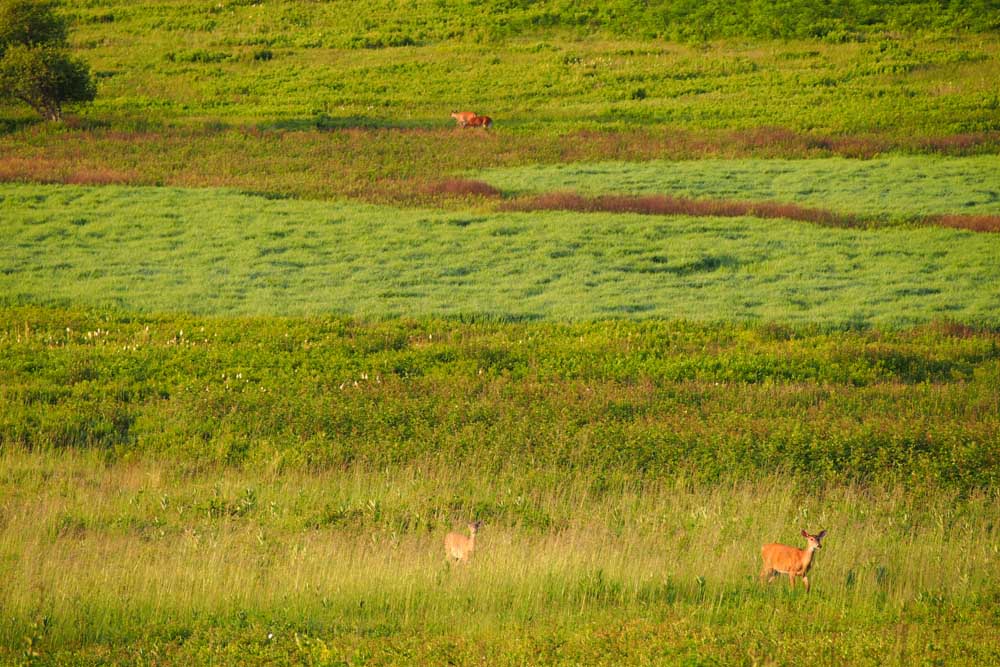
A haven of protected nature amid the farmlands and towns of central Virginia, Shenandoah is nothing less than a refuge for wildlife. Dozens of different animals call the park home, from tiny insects and furry mammals to several reptiles and numerous birds.
Wildlife watching is a hugely popular thing to do in Shenandoah, an activity that’s also possible with your dog, provided it’s from a safe distance.
Observing animals like groundhogs, chipmunks, deer, and even black bears can be a fascinating experience for both you and your dog.
Park rules require you to stay at least 150 feet from black bears and at least 75 feet from deer and all other wildlife. Remember that if an animal reacts to your or your dog’s presence, you are too close and should move away.
5. Watch the Sunset From an Overlook

After enjoying a bunch of fun dog-friendly activities in Shenandoah National Park, watching the sun drop behind the Blue Ridge Mountains is the perfect way to end the day.
Several overlooks on Skyline Drive face west and are, therefore, potentially excellent sunset watching spots in Shenandoah. Some mountain summits, provided that dogs are allowed on the trail to get there, also offer great views of the sunset.
I personally recommend the following places, listed from north to south:
- Millers Head (mile 42.5) – short hike
- Hawksbill Summit (mile 45.5) – medium hike
- Hazeltop Ridge Overlook (mile 54.5) – Skyline Drive overlook
- The Point Overlook (mile 55.5) – Skyline Drive overlook
- Brown Mountain Overlook (mile 77) – Skyline Drive overlook
- Rockytop Overlook (mile 78) – Skyline Drive overlook
- Blackrock Summit (mile 84.4) – short hike
- Turk Mountain Summit (mile 94.1) – medium hike
6. Stay in a Dog-Friendly Room or Cabin

To really experience and immerse yourself in the beauty of Shenandoah National Park, I highly recommend spending at least two full days in the park. Luckily, there are dog-friendly accommodations within the park, which is pretty unusual for a national park.
In fact, all of the three main places to stay in Shenandoah have a number of dog-friendly rooms or cabins.
I suggest taking a closer look at each of them individually for more information about nightly rates, dog fees, availability, and more.
Safety Tips to Visit Shenandoah With Dogs
Exploring Shenandoah National Park with your dog is generally a pretty safe experience. However, there are a couple of things you should keep in mind to ensure an enjoyable visit to the park.
First of all, know where you can go, where dogs are allowed in the park, and how to behave when encountering wildlife.
Wildlife
Shenandoah National Park is home to many wild animals, which is the main reason why dogs must always be on a leash.
The Shenandoah wildlife you’re most like to see include deer, chipmunks, squirrels, groundhogs, and various birds. Skunks are also present in the park.
Snakes
Of the park’s eighteen snake species, two are venomous—copperheads and timber rattlesnakes. Learn about what to do if you encounter a rattlesnake here.
Black Bears
Additionally, there’s also a large population of black bears in the park. Depending on the time of year and a number of other factors, there can be several hundreds of black bears in Shenandoah National Park.
Therefore, it’s important to know what to do when encountering a black bear, especially if you have pets with you. You can learn more about black bear safety here.
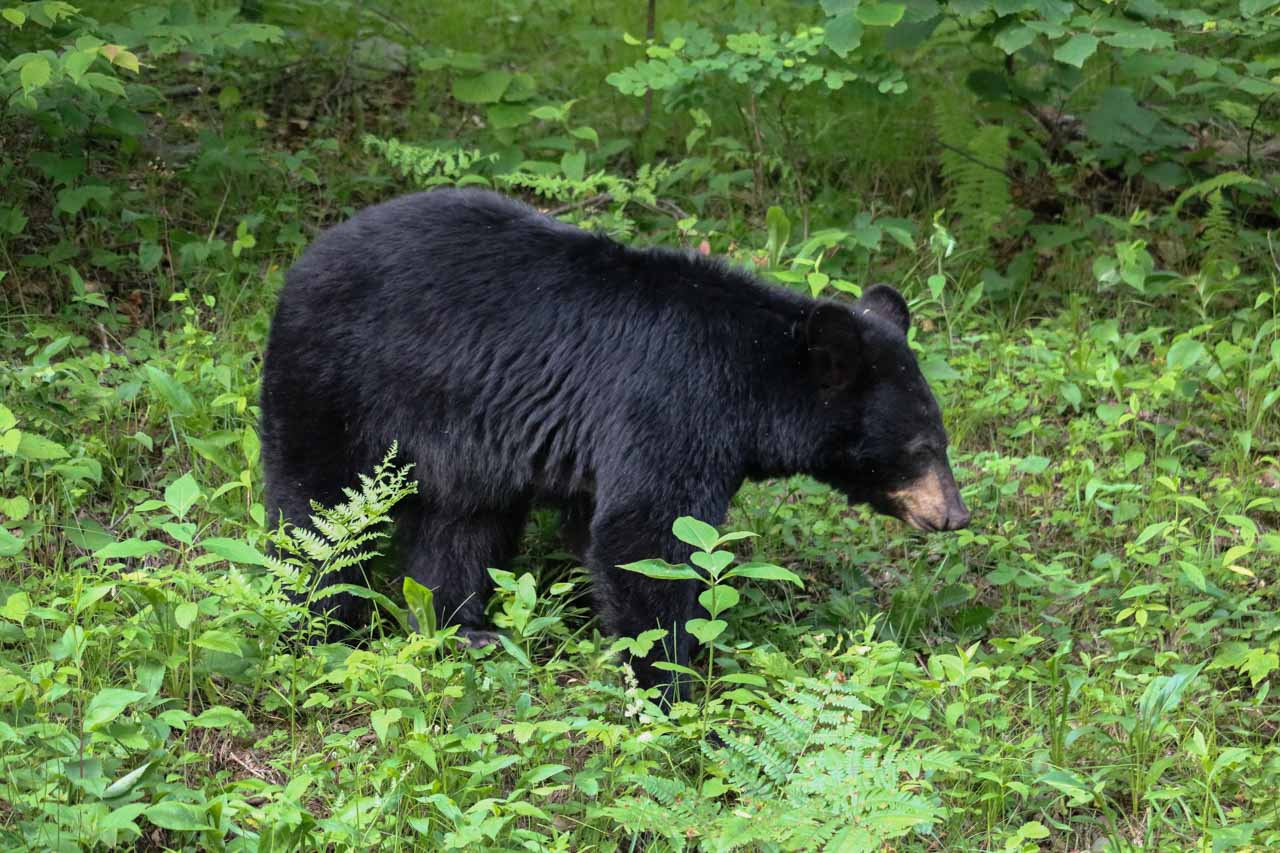
Ticks
Another animal you should be aware of is one of the tiniest ones—ticks. Tick are most active from spring to early-fall in Shenandoah National Park.
To limit your exposure to these tiny creatures and the diseases they might carry, the National Park Service offers the following advice:
- Wear light-colored clothing so ticks are easier to spot.
- Wear long sleeves and long pants. Consider wearing gaiters and/or tucking your pants into your socks.
- Spray your shoes and clothing with an effective repellent.
- Check yourself carefully after any outdoor activity in the park, both in the evening and the next morning. Take a shower as soon as possible after spending time in nature where ticks are present.
Poison Ivy
When hiking the numerous dog-friendly trails in Shenandoah National Park, and even at campsites or along roads, you should watch out for poison ivy. This native plant is found throughout the national park.
“Poison ivy grows plentifully along roadsides, trails, and the edges of parking lots as a vine or low shrub,” Shenandoah National Park says on its website. To prevent the typical itching, swelling, and blistering that results from touching poison ivy, it’s important to be able to recognize it.
You can identify poison ivy by its three jagged and shiny leaves—“leaves of three, let it be”. More information about poison ivy can be found here.
More About Shenandoah National Park
- Park Website
- Travel Guide
- Topographic Map
- Best Shenandoah Hikes
- Top Things To Do in Shenandoah National Park
- Where to See Wildlife in Shenandoah National Park
- Best Viewpoints
- Accommodation



